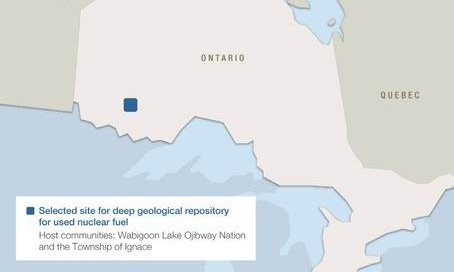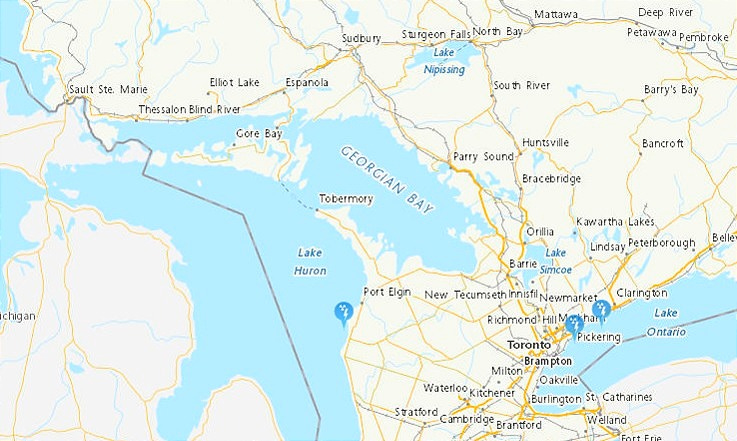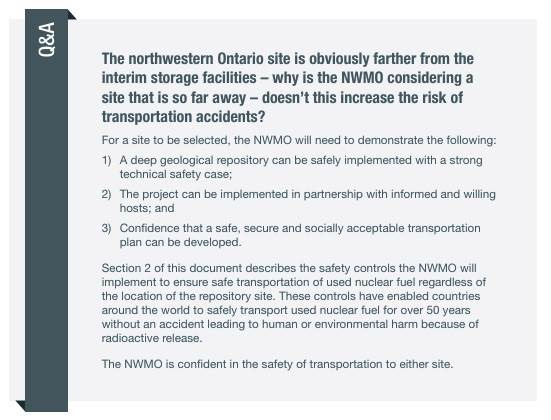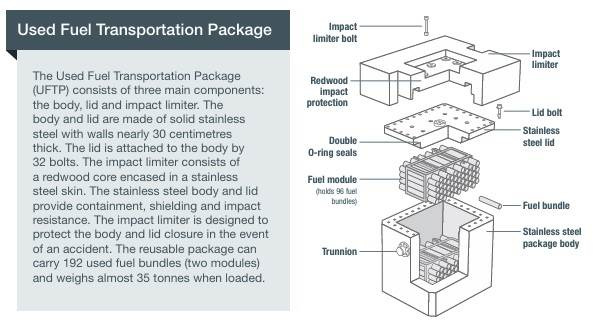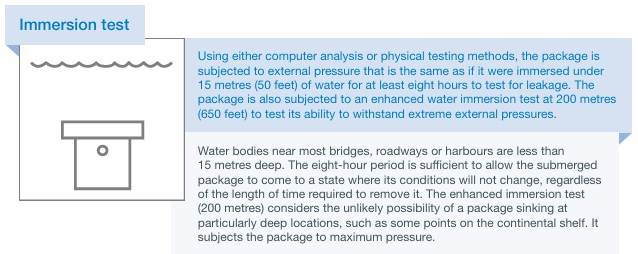What’s on the Way
Spent Nuclear Fuel to be Stored in Northern Ontario
Wabigoon Lake Ojibway Nation and the Township of Ignace to store millions of spent fuel bundles.
Image courtesy NWMO
Part one of this series, What’s Already Here, examined the radioactive waste that is currently stored on the North Shore, mostly in tailings management sites, after decades of uranium mining around Elliot Lake. As we saw from the global mining conglomerate BHP’s report to Elliot Lake City Council, the waste rock and tailings left over from decades of extraction and processing are being maintained, monitored, and cleaned up mostly to the satisfaction of local residents and their elected officials.
The degraded tailings site at Agnew Lake (a provincial responsibility), and the planned waste rock shipments intended to repair it, are notable exceptions to general confidence in our handling of radioactive waste, as are ongoing concerns for the Serpent River watershed and Serpent River First Nation land, and radon leakage on certain properties in Elliot Lake.
Some might say all of that is rather enough of a contribution to Canada’s nuclear legacy from Northern Ontario, and that perhaps some other region of Canada should take a turn at dealing with the radioactive waste produced so that Southern Ontario can keep their lights on. And yet, if all goes to current plans, Northern Ontario will spend the latter half of this century shepherding and storing not some, but all, of the spent nuclear fuel that has been used to answer Southern Ontario’s seemingly insatiable need for nuclear power.
Ontario’s three nuclear power generating stations, all in the south. Image courtesy CNSC
In a 2021 report, Canada’s Nuclear Waste Management Organization (NWMO) estimates that approximately “5.5 million used fuel bundles” need to be permanently stored in a Deep Geological Repository (DGR) somewhere in the province. That somewhere has recently been decided. The communities of Wabigoon Lake Ojibway Nation and the Township of Ignace northwest of Thunder Bay have been jointly chosen by the NWMO to host what will essentially be a very deep, very large, sealed chamber for storage of radioactive fuel bundles that will not be totally safe for human exposure anytime over the next 10,000 years (at least).
…it likely surprises no northerner that the south has decided to send their dangerous waste up here.
Another potential site in Southern Ontario was ruled out, and while the site selection process for the DGR was complicated, it likely surprises no northerner that the south has decided to send their dangerous waste up here. This, despite what might be seen as the increased transportation risks inherent in the approximately 1700 km journey the spent fuel will now take.
According to the NWMO’s current plans, shipments by transport truck of the fuel bundles to the Ignace area should begin in 2040 and run regularly for decades afterwards. Special transport containers have been devised to all but eliminate the risk of accidental radiation leakage in case of delay, accident, or another unforeseen occurrence.
To put this into context, spent nuclear fuel is right now stored on site at power generation plants in Southern Ontario, and in at least 77 surface sites across the United States. Permanent, highly secure resting places for all that radioactive leftover seem like a really good idea, instead of letting it continue to pile up willy nilly.
Are these plans safe? Unsurprisingly, it depends on who you ask.
NWMO discusses concerns in their Preliminary Transportation Plan.
In their official plans, the NWMO spends a lot of time discussing safety, assuring citizens the process will be well-thought out, will err on the side of caution (no shipments during inclement weather, for instance), and will meet all oversight standards:
“Transportation operations will meet federal, provincial and local safety legal requirements, and will be inspected for compliance. The NWMO will need to demonstrate to regulatory authorities the safety and security of a transportation system before the shipments of used fuel can begin.”
Ever wondered what a spent nuclear bundle transportation package looks like? See above, courtesy NWMO.
There’s an encouraging history of safe transport elsewhere. According to the US Department of Energy, “over the last 55 years, more than 2,500 cask shipments of spent fuel have been transported across the United States without any radiological releases to the environment or harm to the public.”
Potential trucking routes for the shipments are not being advertised, but of course Northern Ontario provides only a few viable options to get between the south and the Ignace area by dependable Canadian road. What are the chances the USA would allow these shipments through their land, even though that’s likely the fastest, most direct route? It is by no means guaranteed that shipments would go through the North Shore region, or that only one route would be used every single time.
Looking at the map today, it seems most logical that trucks would take Highway 400/11 all the way, rather than 400/69/17. The 400/11 route is four-lane divided highway for more kilometers, and goes through fewer large population centers. There is also far less chance any fuel bundle packages will accidentally end up in the Great Lakes waterway system, as trucks wouldn’t hug any Great Lake shoreline until near Thunder Bay.
The NWMO is meticulously testing their transport packages for all sorts of accident scenarios.
There are good reasons for not publicizing the routes.
First of all, shipments are not scheduled to start until 2040, fifteen years from now. Who knows how many provincial highway and infrastructure improvements will happen in the intervening years? If the four-lane Hwy 69 is completed, and Hwy 17 widened along significant stretches, perhaps a North Shore route will look viable.
As well, as noted by the US Nuclear Regulatory Commission, the potential for spent fuel as a terrorism target is very real.
Local environmental and safety advocates are not convinced by the DGR plan. The group We the Nuclear Free North (WNFN) is determined to keep spent nuclear fuel out of Northern Ontario, and NorthWatch has been closely monitoring the process for many years, presenting an annual series of online presentations with their findings and opinions.
In the latest NorthWatch webinar on the DGR plans, still available on their site, the group predicts that the buried containers will inevitably fail over time, resulting in accidental releases of radiation. It is unclear how they reach that certainty.
We the Nuclear Free North’s Wendy O’Connor questions the survey clarity. Image courtesy NorthWatch webinar.
Wendy O’Connor, an advocate from We the Nuclear Free North, questions whether the NWMO truly achieved “willing host” status from the communities chosen for the DGR. The choice, she insists, depended on a community survey rather than a binding referendum of residents, and uncertainty remains about the clarity of the final question asked in the survey.
Nevertheless, the NWMO expects to begin construction on the DGR in Ignace/Wabigoon Lake by 2033, with the first shipments set to go… by some undetermined route… in 2040.
Shore Report will, of course, continue to follow this story.
Read Part One of this Shore Report Special — What’s Already Here
Read all of Shore Report


